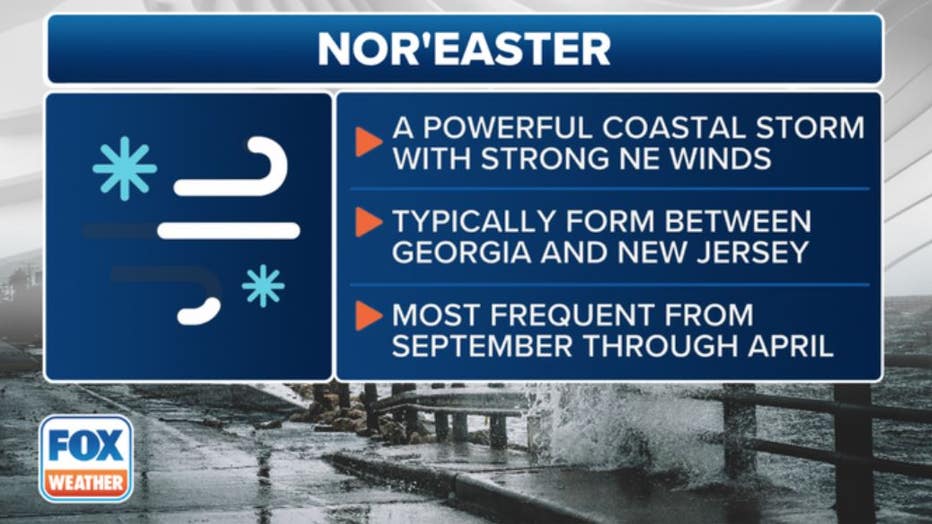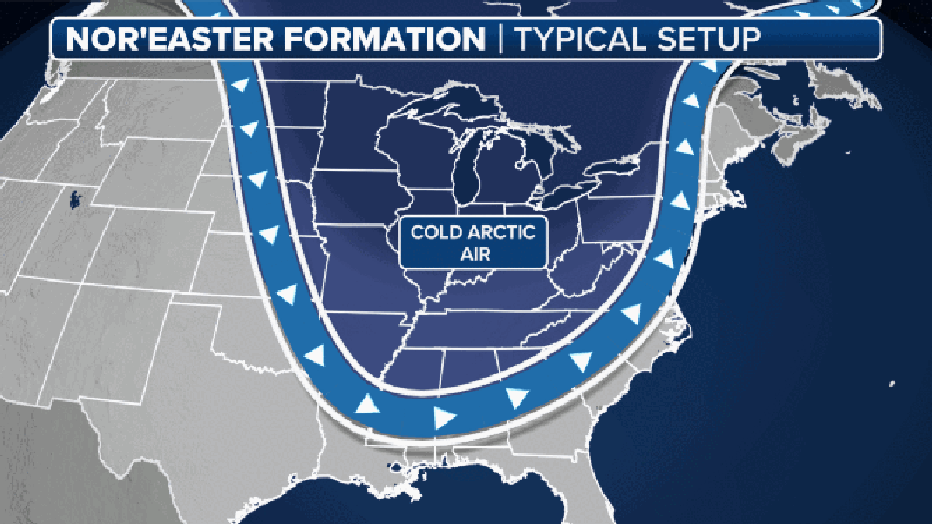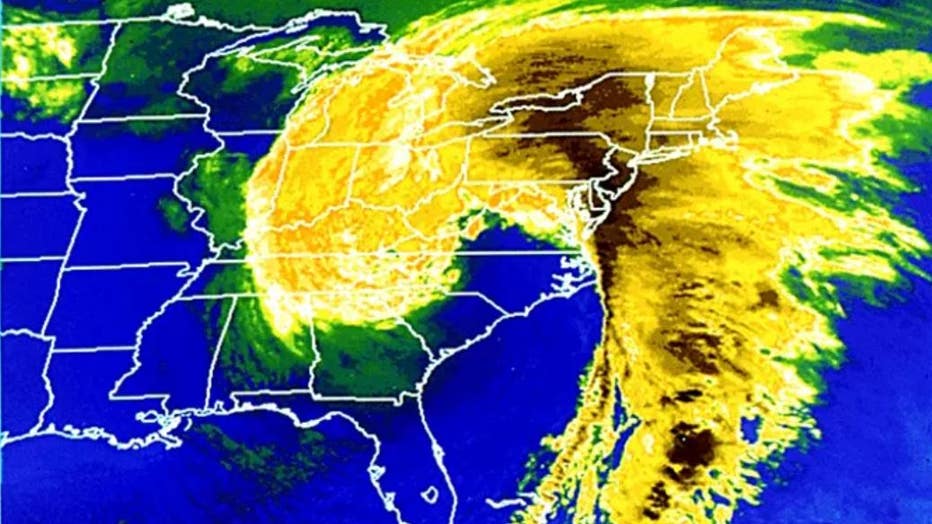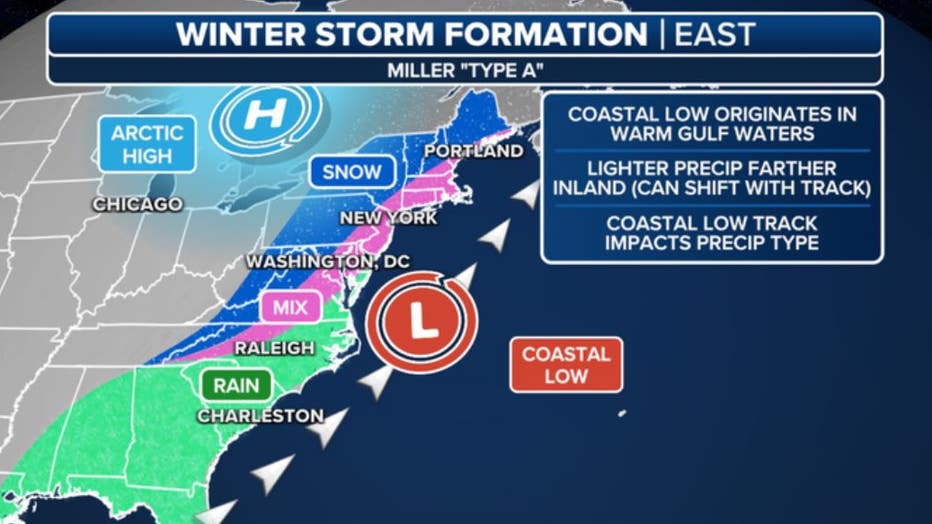What is a nor’easter?
Not every Northeast snowstorm is a nor’easter. In fact, some nor’easters don’t even produce snow.
A nor’easter is a strong low-pressure system that impacts the East Coast of the U.S., particularly the Northeast, but that’s not what makes it a nor’easter.
What makes a storm a nor'easter?

File image of a seagull perching on a piling at the Cape Porpoise pier on Tuesday, March 14, 2023. (Staff photo by Gregory Rec/Portland Press Herald via Getty Images)
A storm is considered a nor’easter if its winds blow from the northeast off the Atlantic Ocean. If the winds are out of the east or southeast during the storm, then it’s not technically a nor’easter, but the impacts will likely be very similar, so the storm should still be taken seriously.
Although most people associate nor’easters with heavy snowstorms that move up the northeastern coast of the U.S., not every nor’easter produces snow.
REMEMBER ALL THAT SNOW? HERE ARE THE MOST MEMORABLE NOR'EASTERS OVER THE YEARS
If a strong low-pressure system off the East Coast is bringing northeasterly winds to the affected areas, but temperatures are in the 40s or 50s, the storm is still considered a nor’easter even though it’s a rainmaker.
You can technically get a nor’easter at any time of the year, but they are most likely to occur between September and April when the jet stream is stronger and more active.

This is the definition and criteria of a nor'easter. (FOX Weather)
Where do nor'easters usually develop?
According to the National Weather Service, most nor’easters develop within 100 miles east or west of the East Coast, typically between Georgia and New Jersey. These storms generally move northeastward and reach their maximum intensity near New England and the Canadian Maritime provinces.
Nor’easters almost always bring heavy precipitation – either rain or snow – high winds, rough surf and, occasionally, coastal flooding to the affected regions. The heavily populated Interstate 95 urban corridor between Boston, New York City, Philadelphia and Washington is especially vulnerable to nor’easters due to its proximity to the coast, according to the NWS.

This animation illustrates how nor'easters typically form. (FOX Weather)
What causes a nor'easter to develop and intensify?
The East Coast is an ideal breeding ground for nor’easters. In the winter, the jet stream delivers arctic air from Canada southward into the U.S., then sends it eastward toward the Atlantic Ocean, where warmer air from the Gulf of Mexico and the Atlantic tries to push northward.
Coastal waters remain relatively mild through the winter because of a northward-flowing warm ocean current called the Gulf Stream, which originates in the Gulf of Mexico. These mild waters help warm the air over the ocean water.
This temperature contrast between the warm air over the water and the cold, arctic air over land is the fuel that feeds nor’easters, providing the instability and energy needed for these storms to develop and intensify, according to the NWS.
THIS IS THE PEAK TIME OF YEAR FOR MAJOR NORTHEAST WINTER STORMS

Meteosat satellite imagery captured a nor'easter dubbed the "Storm of the Century" on March 13, 1993. (EUMETSAT / NOAA)
What are the different types of nor'easters?
There are two main types of nor’easters: "Miller Type-A" and "Miller Type-B."
A Miller Type-A nor’easter develops along the Gulf Coast or East Coast, then tracks northeastward up the Eastern Seaboard. This is considered a "classic" nor’easter, the NWS said.

This graphic explains Miller Type-A nor’easters. (FOX Weather)
A Miller Type-B nor’easter originates in the Midwest, then translates eastward toward the Appalachians. However, once the storm reaches the mountains, it loses its organized low-pressure center. But the storm will eventually redevelop along the East Coast and track up the coastline just like a Miller Type-A storm.
Read more from FOX Weather

